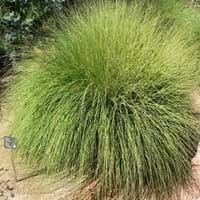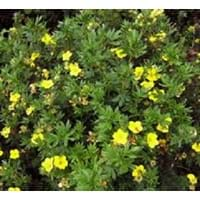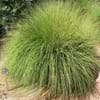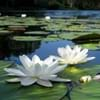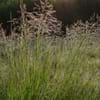Life Span
Perennial
Perennial
Origin
Southwestern United States
Not Available
Types
Not Available
Abbottswood Potentilla
Day Dawn Potentilla
Goldfinger Potentilla
Pink Beauty Potentilla
Snowbird Potentilla
Number of Varieties
Not Available
Habitat
Sandy areas
gardens, Grassland, Homesteads, Open areas
USDA Hardiness Zone
7-11
3-8
AHS Heat Zone
12 - 1
10-1
Sunset Zone
7, 8, 9, 10, 11, 12, 13, 14, 15, 16, 17, 18, 19, 20, 21, 22, 23, 24
A1, A2, A3, H1, H2, 1a, 1b, 2a, 2b, 3a, 3b, 4, 5, 6, 7, 8, 9, 10, 11, 12, 13, 14, 15, 16, 17, 18, 19, 20, 21, 22, 23, 24
Habit
Clump-Forming
Not Available
Flower Color
Non Flowering Plant
Not Available
Flower Color Modifier
Bicolor
Not Available
Fruit Color
Non Fruiting Plant
Not Available
Leaf Color in Spring
Green
Not Available
Leaf Color in Summer
Light Green
Not Available
Leaf Color in Fall
Green
Not Available
Leaf Color in Winter
Green
Light Green
Leaf Shape
Long linear and narrow
Tiny
Plant Season
Summer, Fall
Not Available
Sunlight
Full Sun, Partial Sun
Full Sun, Partial Sun
Growth Rate
Medium
Not Available
Type of Soil
Clay, Loam, Sand
Not Available
The pH of Soil
Acidic, Neutral, Alkaline
Not Available
Soil Drainage
Well drained
Not Available
Bloom Time
Late Spring, Early Summer, Summer
Summer, Late Summer, Early Fall
Repeat Bloomer
No
Not Available
Tolerances
Drought
Drought
Where to Plant?
Container, Ground, Pot
Ground, Pot
How to Plant?
Seedlings
Stem Planting
Plant Maintenance
Low
Medium
Watering Requirements
Requires watering in the growing season, Water occasionally
Water Deeply, Water when soil is dry
In Summer
Lots of watering
Lots of watering
In Spring
Moderate
Moderate
In Winter
Average Water
Average Water
Soil pH
Acidic, Neutral, Alkaline
Not Available
Soil Type
Clay, Loam, Sand
Not Available
Soil Drainage Capacity
Well drained
Not Available
Sun Exposure
Full Sun, Partial Sun
Full Sun, Partial Sun
Pruning
Prune if you want to improve plant shape, Remove damaged leaves, Remove dead branches, Remove dead leaves
Prune if you want to improve plant shape, Prune in winter, Prune to control growth, Remove damaged leaves, Remove deadheads, Requires little pruning
Fertilizers
fertilize in spring
All-Purpose Liquid Fertilizer
Pests and Diseases
Red blotch
Red blotch
Plant Tolerance
Drought, Heat Tolerance
Drought
Flowers
Showy
Not Available
Flower Petal Number
Single
Not Available
Showy Fruit
No
Not Available
Edible Fruit
No
Not Available
Fragrant Flower
No
Not Available
Fragrant Fruit
No
Not Available
Fragrant Leaf
No
Not Available
Fragrant Bark/Stem
No
Not Available
Showy Foliage
No
Not Available
Showy Bark
No
Not Available
Foliage Texture
Fine
Not Available
Foliage Sheen
Matte
Not Available
Invasive
No
Not Available
Self-Sowing
Yes
Not Available
Attracts
Birds, Deers, Insects
Not Available
Allergy
no allergic reactions
Not Available
Aesthetic Uses
Beautification, Ground Cover, Landscape Designing, Showy Purposes
Showy Purposes
Beauty Benefits
Not Available
Not Available
Environmental Uses
Food for animals, Nesting sites for birds, Shelter for wildlife
Air purification
Medicinal Uses
Sore throat
Curing infectious diseases, Improve heart health, Lung Problems, Treatment of ulcers
Part of Plant Used
Leaves, Root
Not Available
Other Uses
Can be made into a herbal tea, Decoration Purposes, Showy Purposes, Used as Ornamental plant
Showy Purposes
Used As Indoor Plant
Yes
Yes
Used As Outdoor Plant
Yes
Yes
Garden Design
Feature Plant, Foundation, Groundcover, Mixed Border, Wildflower
Not Available
Botanical Name
MUHLENBERGIA rigens
POTENTILLA cinerea
Common Name
Deer Grass
Abbotswood Potentilla
In Hindi
हिरण घास
Potentilla Abbotswood
In German
Deer Grass
Abbotswood potentilla
In French
cerfs Herbe
Abbotswood potentille
In Spanish
Ciervo Hierba
Abbotswood Potentilla
In Greek
ελάφια Grass
Abbotswood Potentilla
In Portuguese
cervos grama
Abbotswood Potentilla
In Polish
Deer Trawa
Abbotswood Potentilla
In Latin
deer Grass
Abbotswood Potentilla
Phylum
Anthophyta
Not Available
Class
Liliopsida
Not Available
Genus
Muhlenbergia
Potentilla
Clade
Angiosperms, Commelinids, Monocots
Angiosperms, Eudicots, Rosids
Tribe
Not Available
Not Available
Subfamily
Chloridoideae
Rosoideae
Number of Species
Not Available
Importance of Deer Grass and Abbotswood Potentilla
Want to have the most appropriate plant for your garden? You might want to know the importance of Deer Grass and Abbotswood Potentilla. Basically, these two plants vary in many aspects. Compare Deer Grass and Abbotswood Potentilla as they differ in many characteristics such as their life, care, benefits, facts, etc. Every gardener must at least have the slightest clue about the plants he wants to plant in his garden. Compare their benefits, which differ in many ways like facts and uses. The medicinal use of Deer Grass is Sore throat whereas of Abbotswood Potentilla is Curing infectious diseases, Improve heart health, Lung Problems and Treatment of ulcers. Deer Grass has beauty benefits as follows: Not Available while Abbotswood Potentilla has beauty benefits as follows: Not Available.
Compare Facts of Deer Grass vs Abbotswood Potentilla
How to choose the best garden plant for your garden depending upon its facts? Here garden plant comparison will help you to solve this query. Compare the facts of Deer Grass vs Abbotswood Potentilla and know which one to choose. As garden plants have benefits and other uses, allergy is also a major drawback of plants for some people. Allergic reactions of Deer Grass are no allergic reactions whereas of Abbotswood Potentilla have Not Available respectively. Having a fruit bearing plant in your garden can be a plus point of your garden. Deer Grass has no showy fruits and Abbotswood Potentilla has no showy fruits. Also Deer Grass is not flowering and Abbotswood Potentilla is not flowering . You can compare Deer Grass and Abbotswood Potentilla facts and facts of other plants too.
